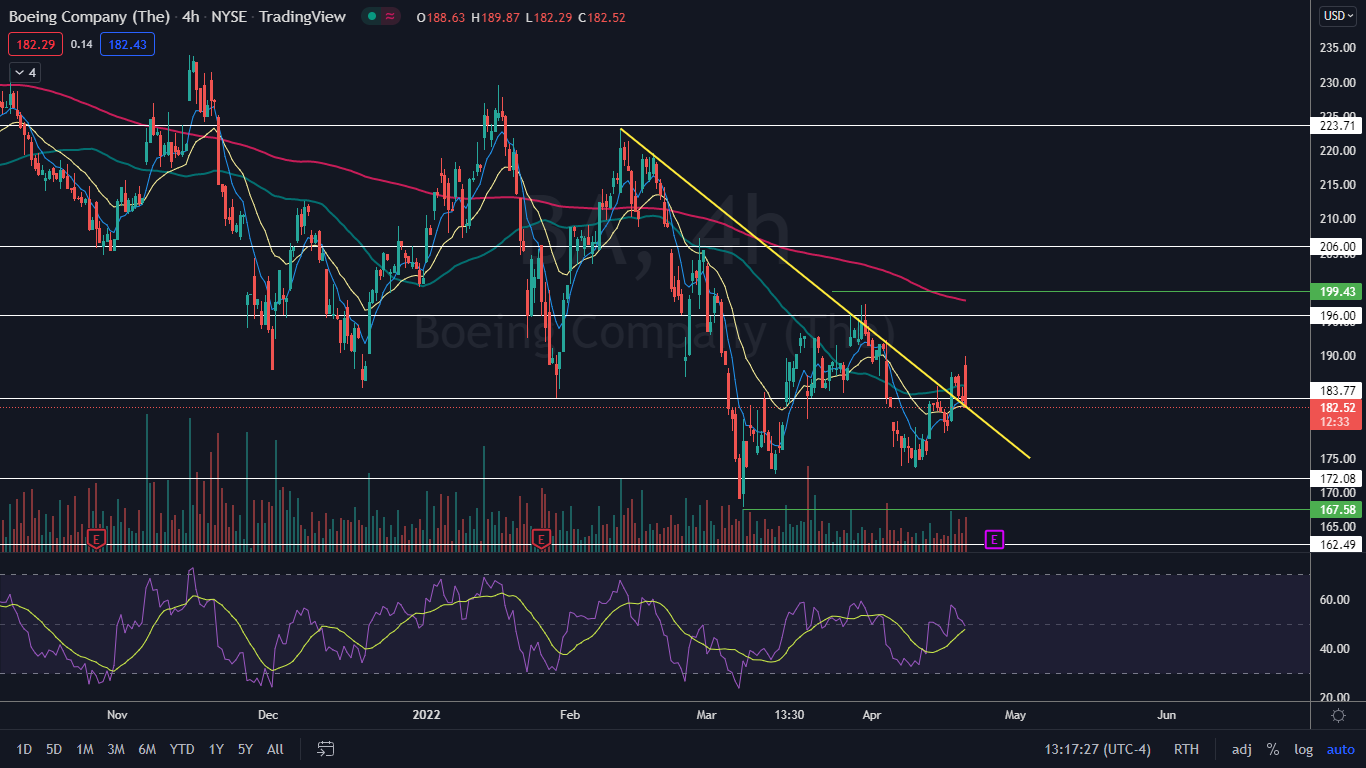
Boeing Co (NYSE:BA) was retesting a descending trendline as support for the third day in a row on Thursday, which the stock broke up bullish from on April 19 after Benzinga called it out five days prior.
The break up from the trendline also marked the point at which it could be confirmed Boeing had reversed course into an uptrend pattern on the daily chart.
An uptrend occurs when a stock consistently makes a series of higher highs and higher lows on the chart.
The higher highs indicate the bulls are in control while the intermittent higher lows indicate consolidation periods. Traders can use moving averages to help identify an uptrend with rising lower timeframe moving averages (such as the eight-day or 21-day exponential moving averages) indicating the stock is in a steep shorter-term uptrend and rising longer-term moving averages (such as the 200-day simple moving average) indicating a long-term uptrend.
A stock often signals when the higher high is in by printing a reversal candlestick such as a doji, bearish engulfing or hanging man candlestick. Likewise, the higher low could be signaled when a doji, morning star or hammer candlestick is printed. Moreover, the higher highs and higher lows often take place at resistance and support levels.
In an uptrend the "trend is your friend" until it’s not and in an uptrend there are ways for both bullish and bearish traders to participate in the stock:
- Bullish traders who are already holding a position in a stock can feel confident the uptrend will continue unless the stock makes a lower low. Traders looking to take a position in a stock trading in an uptrend can usually find the safest entry on the higher low.
- Bearish traders can enter the trade on the higher high and exit on the pullback. These traders can also enter when the uptrend breaks and the stock makes a lower low indicating a reversal into a downtrend may be in the cards.
Want direct analysis? Find me in the BZ Pro lounge! Click here for a free trial.
The Boeing Chart: Boeing gapped up almost 3% higher to start the trading day Thursday but fell back to the descending trendline, in sympathy with the S&P 500, which was falling over 0.5% lower intraday. The high-of-day on Thursday marks the most recent higher high in Boeing’s uptrend pattern, with the most recent confirmed higher low formed on April 18 at $179.04.
- If Boeing holds above the trendline, Thursday’s low-of-day may mark the next higher low, which could indicate the stock will trade higher on Friday. Traders can watch for an inside bar to develop on Friday on lower-than-average volume, to indicate consolidation is taking place before the potential next leg up.
- If the stock closes the trading day below the trendline, the pattern is invalidated and Boeing may fall down to print a lower low and negate the uptrend.
- The move lower on Thursday was on lower-than-average volume, which indicates a healthy retracement as opposed to fear selling. By early afternoon only about 4 million Boeing shares had exchanged hands compared to the 10-day average of 6.62 million.
- Boeing’s relative strength index (RSI) is measuring in at about 50%, which indicates the stock has a lot of room to run higher before becoming oversold. The RSI has also been trending higher along with the stock price since Boeing reversed into its uptrend on April 11.
- Boeing has resistance above at $183.77 and $196 and support below at $172.08 and $162.49.

See Also: GOL Inks Cargo, Logistics Services Agreement With Mercado Livre







